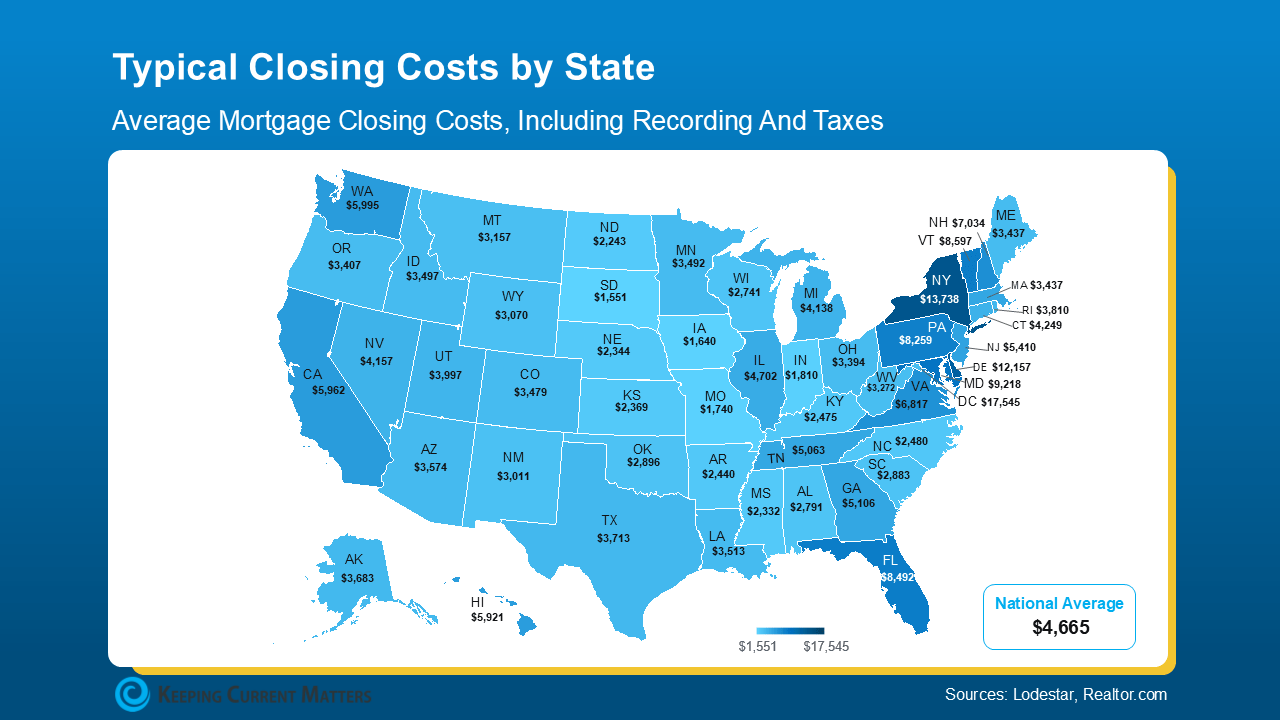Extreme weather can wreak havoc on your home and cost you thousands of dollars. That’s why home hardening is a fast-growing trend among homeowners looking to protect their properties and pocketbooks.
Home hardening involves making upgrades that specifically protect against climate and weather disasters. Not all projects are necessary, and some don’t offer a return on your investment when you decide to sell. However, prospective buyers see value in the right upgrades. We asked experts in the climate prep space to offer tips on the renovations that have the most impact and best return on investment.
The Value of Home Hardening Renovations
“The best weather-resistant home hardening upgrades depend on several factors, including your home’s materials, location, and local weather risks,” says Peter Piotrowski, chief claims officer at Hippo Insurance.
“Hippo’s Extreme Weather Survey1 found that a strong majority of homeowners surveyed (88%) said they’d pay more for a home with climate-resilient features, with 1 in 5 homeowners saying they’d be willing to pay up to $10,000 more for a home built to withstand extreme weather,” Piotrowski adds.
“Real estate professionals in high-risk areas are already seeing increased interest in properties with impact windows, fire-resistant materials, backup power, and flood mitigation features,” says Lauren Dowling, a senior vice president at World Insurance. “These homes tend to stand out in listings, sell faster, and generate fewer concerns during inspection or insurance review. As climate events continue, demand for resilient homes is only expected to grow.”
Choosing the Right Upgrades for Your Home
With more devastating weather events happening every year, potential home buyers and current homeowners are becoming more interested in ways to protect their property.
“Our 2025 HousePower Report2 saw an increase in homeowners’ concern for extreme weather preparedness year over year, with 25% reporting it as a top issue in 2023 and 28% in 2024,” Piotrowski says. “This all points to a trend in homeowners valuing more climate-conscious design and a growing desire to ensure that their home and long-term finances are protected.”
Agent Aaron Tetzlaff of Coldwell Banker Warburg said he’s seen firsthand how these upgrades are becoming more important to homeowners, buyers, and insurers alike. “From a real estate perspective, upgrades that are both visible and functional tend to offer the best return,” he says.
Protecting your home while ensuring a return on your investment shouldn’t be a guessing game. There are specific upgrades that show a return based on where you live.
Home Hardening Varies by Geographic Location
“Return on investment is tightly tied to geography. For example, in Florida, storm shutters and reinforced garage doors are practically non-negotiable,” Tetzlaff explains. “Meanwhile, in California, hardened roofs, defensible space, and fire-rated materials directly impact insurability and resale.”
Travel further east, and the game changes again. “As for us on the East Coast in coastal or low-lying areas, flood mitigation upgrades like back-flow preventers or wet flood-proofing are increasingly expected,” Tetzlaff adds.
Where you live determines whether your home-hardening techniques matter to potential buyers. “Buyers are becoming more educated, and often ask about these features before even touring a home,” Tetzlaff says. Your return on investment is directly tied to the buyers’ perceived value.
“When your home is equipped with climate-resilient upgrades that protect it from severe weather in your area, you’re not only better protected, you’re also helping preserve your home’s long-term value,” Piotrowski adds. These upgrades don’t just promise interest from future buyers; they also benefit your wallet in the short term through government rebates and incentives.
Location-Based Financial Incentives
“There are a growing number of financial incentives, depending on location,” Tetzlaff says. “Always check with your local municipality, county, and state for incentives and rebates.”
In addition to hyperlocal offerings, the Federal Emergency Management Agency offers grants to communities and individuals who make certain upgrades. In some states, programs such as California’s Wildfire Prepared Home program offer retrofitting rebates for wildfire protection. You can also get federal tax credits for windows, insulation, and Energy Star-certified roofing.
“Homeowners can often recover 10–30% of project costs through these programs, improving ROI considerably,” Tetzlaff says.
5 Home Improvements with the Best ROI
Here are some improvements that experts say see the biggest return when selling.
1. Drainage Improvements
Whether you’re focusing on downspouts or landscaping, improving the drainage around your home is good practice for regular home maintenance and a necessary upgrade for those living in areas where rain is frequent and threats from hurricanes and other storms are regular.
“There are several ways to improve drainage,” says broker Suzanne Weinstein of Coldwell Banker Warburg. “One, keep gutters in good repair and make sure the downspouts carry the water a respectable distance from the home. Two, add a French drain to the periphery of the home, with a connecting drain pipe to carry excess water to the street. Three, if water builds up in the street outside your home during storms, consider asking the city or township to partner with you financially, to add a drain to which you can connect your property’s runoff.”
“Keeping water from collecting on your property will do a lot to maintain its condition and value,” Weinstein adds. “Although none of these will do much in catastrophic circumstances, they can make a huge difference in hurricanes, tropical storms, and downpours.”
Along with landscaping upgrades, Piotrowski suggests looking into upgrades to home systems and your home’s structure to protect against flood damage. “Additional upgrades like installing sump pumps and sealing foundation cracks are important steps to prevent costly damage,” he says. “Water damage is one of the most common and costly issues for homeowners, so it’s important to understand your risks and take steps to prevent them.”
When you make upgrades that mitigate flood risk, you also make it easier for yourself to secure flood insurance. “Many homeowners don’t realize that flood damage isn’t covered by a standard homeowners insurance policy,” says Piotrowski. “Flood insurance can help provide additional financial protection. Although 99% of U.S. counties experience flooding, only a small percentage of homeowners have flood insurance.”
2. Impact-Resistant Windows and Doors
Another key upgrade for those living in hurricane territory is the installation of impact-resistant windows and doors. “They look great, they’re new, they add curb appeal, they boost security, and can lower your insurance,” says broker Bill Kowalczuk of Coldwell Banker Warburg.
The impact on your home value is multi-dimensional. “They protect from storms and improve energy efficiency, noise reduction, and aesthetics,” Tetzlaff adds.
While you’re making improvements in this area, Kowalczuk recommends skipping decorative storm shutters. “They’re called decorative for a reason,” he says. “They don’t actually protect anything.”
3. Fireproof Roofing
States such as California experience catastrophic wildfires each year. You can protect your home from less serious fires by having fireproof roofing and siding added.
“The roof is a critically vulnerable area as it’s the largest and most exposed exterior surface on a home,” says Harry Statter, a wildfire ecologist and the founder of Frontline Wildfire Defense. “A Class A Fire-rated roof is designed to resist ember ignition and radiant heat which dramatically reduces the chance of ignition. A new roof also has a tendency to strengthen resale value.”
Fireproof roofing is only good for ROI if you live in an area regularly threatened by fires. “Particularly in wildfire-prone areas, these upgrades add significant value and are often viewed as essential rather than optional,” Tetzlaff says.
“Clay, metal, or composite shingles are common choices. Just make sure you’re using top-grade materials,” Kowalczuk adds. If you’re interested in protecting against wildfires with methods that work and get you money back, he recommends skipping less effective options such as fire-retardant sprays or coatings.
“On their own, they won’t do much,” Kowalczuk says. “They only work if they’re part of a full system of fire protection. Doing just this is pretty much useless.”
4. Smart Home Upgrades
These days, smart home features are offered on nearly every home appliance and major home system. These improvements include everything from smart thermostats to video doorbells. One particular way to harden your home involves purchasing smart home systems with features that alert you to major problems.
Dowling suggests automatic water shut-off valves and leak detection systems. “Water damage is one of the most frequent and costly insurance claims. These systems catch issues early and can prevent thousands in losses,” she explains.
Central station fire alarms and monitored smoke detectors also offer early detection and ensure a fast response from first-responders, Dowling says, which can reduce fire damage severity dramatically.
Available in smart home and regular options, surge protection systems are ideal in areas prone to electrical problems. “These protect high-value electronics and appliances from costly damage due to lightning or grid failures,” Dowling says.
5. Generators
Severe storms of all kinds lead to power outages, which can be costly at best and dangerous at worst. Whole-home backup generators ensure your food won’t spoil and you’ll maintain use of life-saving medical equipment, all while keeping your devices charged and ready.
“Especially valuable in areas prone to outages, they help maintain climate control, prevent frozen pipes, and keep sump pumps running,” Dowling says.
Like other upgrades on this list, you won’t see much return on your investment if you opt for a generator that is not frequently used. “Some resilience products don’t live up to their marketing,” Tetzlaff says, including generators on that list. Oversized generators or off-grid systems aren’t worth it unless frequent and prolonged outages are common for you, he says.
Read more at Better Homes & Gardens
Related Links
If there is a home that you would like more information about, if you are considering selling a property, or if you have questions about the housing market in your neighborhood, please reach out. We’re here to help.







